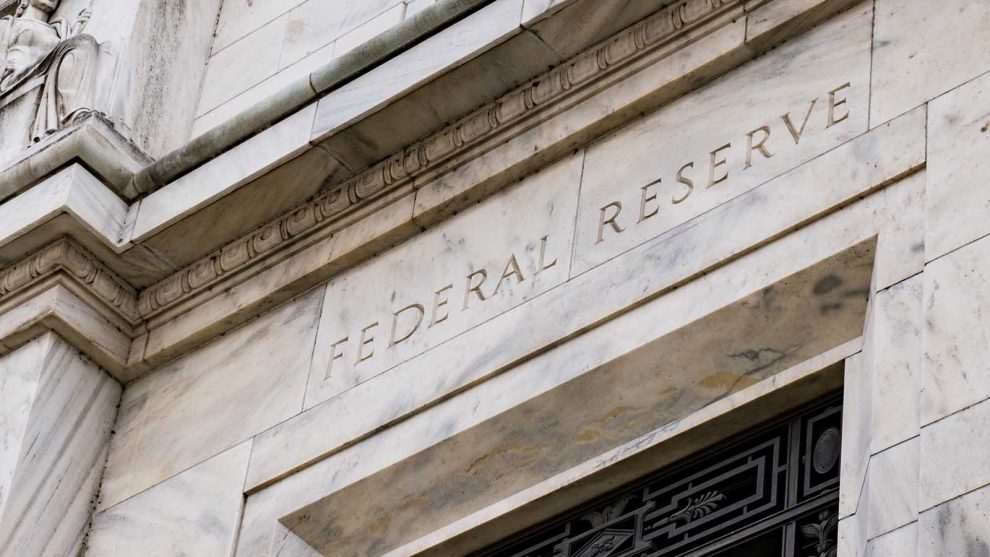
Our nation has a massive demographic challenge … get ready for huge spend on Social Security and healthcare … entitlements have exploded … where to invest today
Last Thursday, for the first time ever, interest payments on federal debt hit $1 trillion within a single year.
Here’s CNBC:
With the Federal Reserve holding benchmark rates at their highest in 23 years, the government has laid out $1.049 trillion on debt service, up 30% from the same period a year ago and part of a projected $1.158 trillion in payments for the full year.
It’s just the latest in an accelerating parade of grim spending/debt milestones from our government.
Whether we end up with a 25- or 50-basis-point rate cut on Wednesday… whether we end up with Harris or Trump in the White House… whether Democrats or Republicans take control of Congress… two things are certain:
Our government debt is headed higher, and the purchasing power of our dollar is headed lower.
Now, in one sense, this makes investing easy – buy top-tier stocks with pricing power (with an eye toward healthcare, as I’ll detail later), gold, and real estate.
So, if you’re busy, I just gave you today’s punchline. You can X-out of our Digest, go do a little portfolio rejiggering, and call it a day.
But if you’d like to get a better sense for the debasement mega-tsunami headed our way, and why, stick around.
The unavoidable financial reckoning out on the horizon
Yes, our government spends as though it has, as Fed President Neel Kashkari once put it, an “infinite amount of cash” … yes, there’s corruption, waste, and pork on a staggering level… and yes, our leaders are more interested in getting re-elected than getting our nation’s financial house in order (mostly).
But…
Even if we didn’t have these problems, we’d still face one enormous issue that’s going to transform our nation, economics, and investment markets in the coming decade…
Demographics.
Our nation is getting old.
The problem is that much our federal government’s financial systems run as a Ponzi scheme. The young pay for the elderly.
Now, this isn’t a problem in a thriving population where there’s significant household formation, families have loads of children, and the up-and-coming generations outnumber the older generations. But that’s no longer our reality.
For a variety of reasons that we won’t get sidetracked by today (though they’re fascinating and perhaps the subject of a future Digest), Americans are no longer reproducing at the same rate as in past decades. Worse, we’re not even reproducing at a rate that sustains our population.
Here’s Forbes:
The U.S.’ fertility rate for 2023 is well below a threshold demographers call the replacement rate. This is the fertility rate needed for the current generation to replace itself, rather than grow or shrink.
The CDC puts this threshold at 2,100 births per 1,000 women. The U.S. has “generally been below replacement since 1971 and consistently below replacement since 2007,” the report said.
So, how does this affect our government and its finances?
Well, as you can see below, the two biggest line items on our government’s budget are healthcare and Social Security.
Together, they comprise 45% of federal spending.

So, what happens when our nation’s demographics are turned on their head such that a minority of working-age Americans are forced to foot the bill for a majority of retired/elderly Americans?
The system as we know it breaks down.
The numbers behind what’s coming…and when it’s arriving
In 1960, the ratio of workers to Social Security beneficiaries was 5.1-to-1. By 2020, that figure had crashed to 2.6-to-1, and it continues falling rapidly.
Meanwhile, life expectancy is rising. So, it’s not just “more people taking out of the system relative to those who are putting into the system,” it’s “more people taking out of the system for longer periods of time.”
Here’s the Urban Institute:
In 1960, men who turned age 62 could expect to live another 15 years. By 2040, they will likely live for another 22 years…
If the earliest eligibility age for Social Security retirement benefits remains 62, rising life expectancy will increase the number of years older adults receive benefits.
But this is just Social Security…
As you’d expect, living longer means an increase in healthcare related expenses – a great deal of which is on the government’s dime.
As noted a moment ago, the U.S. government’s healthcare spending is a massive portion of its budget. Well, it’s set to increase sharply as the population ages.
Older adults, especially those over 65, use more healthcare services. This is obvious, but you might not know exactly how much more. Per-person healthcare spending for this group is around five times that for children and nearly three times that for working-age adults.
So, as America turns gray, expect our healthcare spending to skyrocket. For a sense of what’s coming, in 2024, the federal government will spend about 6.3% of GDP on healthcare programs. By 2054, this is projected to rise to 9.8% of GDP, with the aging population being a key driver.
In terms of spending itself (not relative to GDP), healthcare spending is projected to grow by 73% over the next decade, far outpacing economic growth. This will put enormous pressure on federal budgets, potentially increasing the national debt, which could rise from over 100% of GDP today to 166% by 2054.
Now, you might have zeroed in on this “2054” figure and thought to yourself “way out in the future, not my problem, ignore.”
Actually, the first major line-in-the-sand is only six years away.
The tipping of the scale is fast arriving
In 2030, the U.S. is projected to hit a massive inflection point when the entire baby boomer generation will have hit age 65. The consequence is that older adults will have surpassed the working age population that pays into our tax system.
So, just six years from now, one in five Americans will be over age 65 and from then on, the growth of the elderly will outpace that of the workforce.
This is when our unsustainable Ponzi scheme will reach a new level of instability. The eventual complete collapse remains decades away, but the economic foreshocks are at our doorstep.
Meanwhile, in the background, we have today’s political leaders waxing on about not touching Social Security, while accusing opposite-party politicians for wanting to raid Social Security.
For example, back in June following the Biden/Trump debate, Vice President Harris posted on X:
President @JoeBiden and I will protect Social Security. Donald Trump will not. The contrast is clear.
Last night, we heard claims that Donald Trump is fighting for our seniors. How can you claim to fight for seniors when you intend to cut Social Security and Medicare, which is a lifeline for so many of our seniors?
Now, I’m not arguing for or against Harris or Trump – both parties have their version of this tired political talking point. But let’s be clear about what this really means…
“Protect Social Security for seniors without making any changes whatsoever to our current system” is the same thing as saying, “let’s vote to load up our children and grandchildren with a crippling level of debt and monstrous taxation.”
That campaign slogan doesn’t have quite the same ring.
So, if we’d like to avoid that path, we have two options…
One, move the retirement age higher and/or reduce Social Security payouts…
Or two, fire up the printing presses, pay retirees their Social Security benefits in nominal dollars, ignoring that the inflation-adjusted buying power of those nominal dollars has been taken out back and shot.
Do you think any politician is going to run on a campaign of a pushed-back retirement age and reduced Social Security benefits?
Me neither…which means get ready for dollar debasement on a scale we’ve never seen before over the coming decade.
But wait – it doesn’t stop there…
Move over Social Security and healthcare, there’s a new money-suck in town
Well, it’s not new. But the explosion in its size is relatively new.
I’m talking about entitlement programs.
Here’s The Wall Street Journal from last Wednesday:
True, Social Security and Medicare are a drain on general revenue and will become big fiscal problems if not reformed. But…the real driver, the elephant in the room, is means-tested social-welfare spending—Medicaid, food stamps, refundable tax credits, Supplemental Security Income, Temporary Assistance for Needy Families, federal housing subsidies and almost 100 other programs whose eligibility is limited to those below an income threshold.
Means-tested social-welfare spending totaled $1.6 trillion in 2023. Welfare spending now absorbs an astonishing 72.6% of unobligated general revenue (total revenue net of Social Security and Medicare payroll taxes and premiums and mandatory interest on the public debt) and is larger than the claims against unobligated general revenue by Social Security (4.1%), Medicare (23.5%) and defense (37.2%) combined.
Since funding for the War on Poverty ramped up in 1967, welfare payments received by the average work-age household in the bottom quintile of income recipients has risen from $7,352 in inflation-adjusted 2022 dollars to $64,700 in 2022, the last year with available household income data. This 780% increase was 9.2 times the rise in income earned by the average American household.
Don’t expect any of these social programs to be cut or reduced in a meaningful way. People like getting their free stuff.
And yet given the demographic shift we’re looking at today, there will be fewer working-age Americans to pay for all this.
Might that be a problem?
This is not a “maybe we can avoid it” situation for our government – the financial pain is baked in
Our national debt is too high… our fiscal deficit is accelerating too rapidly… our negative demographics aren’t going to reverse… and our politicians won’t make hard-yet-necessary policy decisions.
Now, yes, immigration (both legal and illegal) can slow down what’s happening, but it won’t stop it. And similarly, rate cuts from the Fed beginning Wednesday can take pressure off the government’s fiscal deficit. But these are just fingers in the leaking dike.
We’re the runaway 18-wheeler with the brakes out, barreling down the steep mountain highway. It just a matter of how long until we can stay on the road.
What this means for us as investors is that we need to align our wealth with assets that will float atop the churning, foaming swell of inflated dollars that’s on the way.
And this brings us back to our action steps from the top of this Digest. At a high level, here are some of the assets and sectors to make sure you own in your portfolio:
- Top-tier stocks that have pricing power, enabling them to better protect their margins (and given the demographic statistics we’ve looked at today, give a hard look to healthcare providers, healthcare REITs, and companies that service the needs of our elderly population).
- Gold – the go-to wealth preservation asset for millennia.
- Gold miners – basically, gold with some leverage thrown in.
- Real estate – another timeworn wealth preserver.
- Bitcoin – yes, the crypto has been taking it on the chin in recent months, but an allocation to “digital gold,” even a small one, is likely to remain a wise move given the economic challengers our nation and currency face.
Wrapping up, I’ll leave you with this…
Today, our current national debt clocks in at $35.5 trillion.
With that context, take a guess…
Over the next 30 years, what will be the combined shortfall of Social Security and Medicare? To be clear, not our entire national debt, just the shortfall of Social Security and Medicare alone.
Ready?
$116 trillion.
Added to our current national debt, this shakes out to a per-taxpayer bill of about $900,000.
We can’t tax our way our way out of this, and our politicians won’t slash our way out of this via spending cuts.
Make sure your portfolio is ready for a printing-press future.
Have a good evening,
Jeff Remsburg




